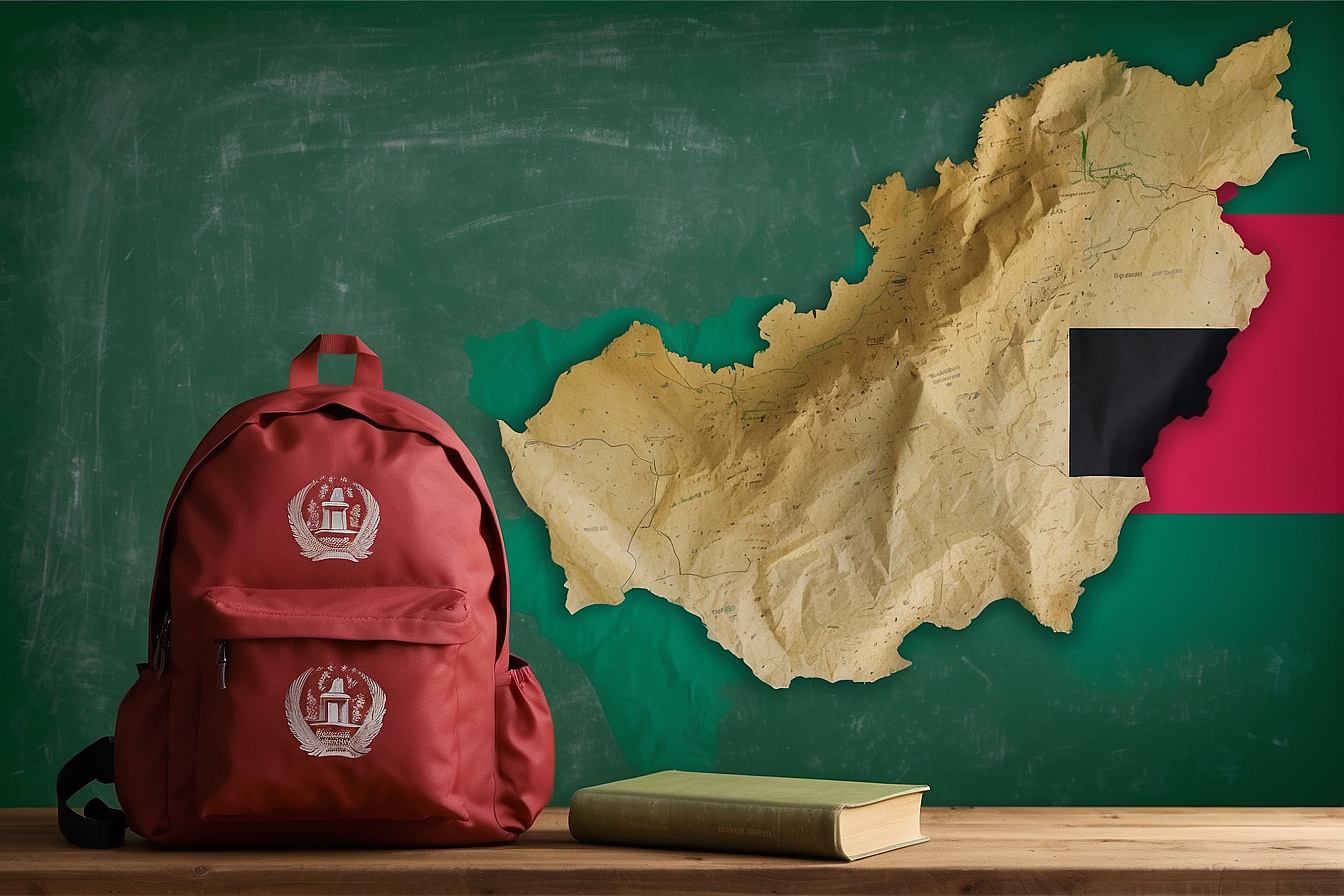
Education in Afghanistan: A Great Statistical Overview
Table of Contents
Introduction to Education in Afghanistan
Education in Afghanistan has made major strides in expanding access to learning since 2001 after years of conflict closed schools and curtailed learning for generations of children. Key education statistics provide insights into Afghanistan’s educational landscape and areas needing improvement. Reliable data enables policymakers to identify priorities, direct resources efficiently, and track progress.

A. Overview of Education in Afghanistan
Education in Afghanistan consists of primary, secondary, and higher education institutions. School attendance is compulsory for children aged 7-15. Afghanistan has over 16,000 general education schools including public, private, and madrassas.
B. Importance of Education in Afghanistan
Education is crucial for Afghanistan’s continued development and rebuilding efforts. Literacy and skilled labour boost economic productivity. Education also promotes peacebuilding, health, and democratic participation. Educating girls, in particular, has immense society-wide benefits.
C. Role of Education in Afghanistan Statistics
Education data can highlight strengths to build upon and weaknesses to address through reforms. Statistics enable setting informed benchmarks on access, resources, and outcomes. Tracking changes over time measures reform impact. Data should inform policy and resource allocation.
Before diving into details about the challenges faced by Afghanistan, we know that access to quality educational resources is difficult to come by. Luckily the LearningMole YouTube Channel has a range of free resources available, like how some animals camouflage themselves.
Enrollment Statistics for Education in Afghanistan
In 2020, Afghanistan had around 10 million students enrolled in general education from grades 1-12, assisted by over 190,000 teachers. Net enrollment has risen remarkably since 2001 when less than 1 million students, mostly boys, attended school.
A. Primary Education in Afghanistan
Primary education spans grades 1-6. As of 2018, nearly 5 million students were enrolled in primary school. Gross enrollment ratios stood at 104% for boys and 80% for girls. Expanding girls’ access remains a priority.
B. Secondary Education in Afghanistan
Secondary education runs from grades 7-12 in Afghanistan. Around 37% of secondary school-aged children were enrolled as of 2017, including 43% of boys and 30% of girls. Enrollment drops significantly at the secondary level, particularly for girls.
C. Higher Education in Afghanistan
Higher education includes two-year colleges and four-year university programs. Afghanistan has around 130 public and private higher education institutions. Total tertiary enrollment was estimated at 351,000 students in 2019, of which women comprised around 30%.
Literacy Rates and Educational Attainment
A. Adult Literacy Rates
Afghanistan has low adult literacy rates despite recent gains. As of 2018, around 43% of Afghans aged 15 and over could read and write. The male literacy rate stood at 55% compared to 30% for females.
B. Youth Literacy Rates
Youths aged 15-24 have higher literacy rates than older adults. Latest UNESCO data shows 70% literacy among young males and 50% among young females. Sustaining access to education for youth can further boost literacy.

C. Educational Attainment Levels
As of 2015, average years of schooling completed were estimated at 3.7 years overall – 4.7 for men and 2.2 for women. Around 35% of adult men and 13% of women had completed at least a secondary education.
1. Primary Completion Rates
Afghanistan’s net primary completion rate stood at 56% as of 2009. The rate was higher for males at 66%, versus 43% for females. Increasing girls’ retention and attendance remains an urgent priority.
2. Secondary Completion Rates
Secondary completion rates remain low, at around 38% for males and 19% for females as of 2012. Poverty, security issues, and teen marriage contribute to low retention, especially among adolescent girls.
3. Higher Education Attainment
Tertiary enrollment has grown but remains limited, with only around 8% gross enrollment as of 2016. Gender disparities persist, with males outpacing females in university admissions.
Educational Expenditure
A. Government Spending on Education in Afghanistan
Afghanistan’s government allocated around $500 million for primary and secondary education in 2021. This equals over 15% of total national budget expenditures. External aid also assists with education funding.
B. Impact of Education Funding
Increased education budgets have enabled school construction, textbook provision, and expanded teacher hiring over the past decade. However, resources remain inadequate to address needs fully. Severe shortages of facilities, supplies and trained educators persist.
C. Allocation of Education Budgets
Around 60% is spent on teacher salaries. The limited remainder covers development, textbooks, vocational programs and administration. More resources are needed for infrastructure, learning materials, and instructional quality improvement.
Educational Performance and Achievement
A. Standardised Testing Data
Reliable, nationwide data on student learning outcomes is lacking in Afghanistan. Smaller-scale assessments indicate low proficiency rates in reading, math, and other subjects, particularly among girls.
B. Factors Influencing Performance
Conflict, poverty, child labour, teaching quality, school facilities and safety issues all impact educational achievement. Girls face additional barriers to attendance and learning including household chores, teen marriage and gender biases.
C. Challenges in Improving Performance
Enhancing student performance remains difficult given low access to early education, inadequately trained teachers, and lack of updated textbooks and technology. Extremist violence also disrupts schooling and deters attendance.
Access and Equity in Education
A. Urban vs Rural Access
Disparities remain in education access between urban and rural areas. Net enrollment ranged from 43% in rural zones to 77% in Kabul as of 2010. Rural areas suffer from shortages of female teachers and distance to schools.
B. Gender Disparities
Traditional gender roles impede girls’ education. National data shows lower enrollment and higher dropout for girls, especially after puberty. Ensuring adequate female teachers and safe facilities increases girls’ access to schooling.
C. Socioeconomic Factors
Poverty deters access for both girls and boys. Child labour needs and costs for transport and supplies also prevent enrollment. Children with disabilities and from minor ethnic groups face additional barriers.

Challenges Facing Afghanistan’s Education System
A. Infrastructure Challenges
Thousands of schools lack usable buildings and basic amenities like water, sanitation and electricity. Most facilities require extensive upgrading to provide adequate learning environments.
B. Security Concerns
Ongoing conflict severely disrupts schooling through damage to infrastructure plus the threat of violence en route or in classrooms. Fear keeps many children, especially girls, out of school.
C. Teacher Shortages and Quality
Afghanistan has a severe teacher shortage with pupil-teacher ratios exceeding 40:1 in many provinces. Most lack adequate training and support. Low pay and threats of violence contribute to low retention and absenteeism.
Government Initiatives and Reforms
A. Policy Initiatives
Recent reforms focus on teacher training and pay, monitoring attendance, constructing/rehabilitating infrastructure, and public awareness campaigns on girls’ education. Expanding community-based education is also a priority.
B. Efforts to Address Challenges
Coordinating with communities and religious leaders has reduced opposition and increased girls’ participation in some areas. Foreign donors have funded school construction, learning materials, and teacher training.
C. Impact of Reforms
Reforms and aid investment have boosted enrollment and teaching. But insecurity along with poverty severely hamper access and quality. Ongoing Taliban control of territory particularly sets back girls’ schooling. Sustained efforts and Security are prerequisites for further progress.
Future Prospects and Recommendations
A. Strategies to Improve Education Quality and Access
Increasing resources for teacher training, safe facilities, books and technology is critical. Greater access to early childhood programs prepares children. Vocational education should be expanded for out-of-school youth.
B. Addressing Challenges
Establishing a secure environment conducive to learning is imperative through negotiated settlements. Community participation in school management can build local investment in education.
C. Call to Action for Stakeholders
External donors must continue supplementing Afghanistan’s limited budgets. Local leaders, families and educators should champion education. With coordinated efforts across government, civic institutions and international allies, Afghanistan can fulfil its people’s aspirations for education.
Conclusion
A. Summary of Key Findings
Afghanistan has achieved enormous gains in school access and literacy. But poor learning conditions, gender disparities, poverty and conflict continue to deter enrollment, retention and education quality.
B. Importance of Education Statistics
Reliable data is vital for understanding accomplishments and persisting gaps. Improved information systems would strengthen monitoring, planning and policy reforms.
C. Hope for the Future
Afghanistan’s young generation represents tremendous potential for the country’s growth. Ensuring educational opportunities for all of Afghanistan’s youth is the best investment towards a stable, prosperous future. With sustained commitments from government and international partners, Afghanistan’s schools can nurture generations of citizens capable of rebuilding their nation.
If you have enjoyed this feel free to browse our articles on LearningMole covering a library of different topics. Here is one covering some of the best education blogs online. If this is to your liking be sure to take a look at some of our premium content videos to expand your mind!


Leave a Reply